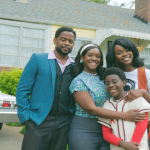Next Steps in Campaign Strategies to Reduce Teen Dating Violence: Examining Media Campaigns Through the Lens of “Boy Culture”
Cultural Media Industry and Consumers
Violence among teens dating is not a new problem. Advocacy campaigns aimed at thwarting teen dating violence, which includes physical, sexual, and psychological abuse as well as stalking, is often geared toward female adolescents with a primary focus on how they can avoid becoming a victim.
But research from University of Florida College of Journalism and Communications Advertising Associate Professor Cynthia R. Morton, with her colleague from the University of Oregon, found that certain promotional materials can also be beneficial in not only broaching the subject with teen boys but mirroring appropriate responses to potentially volatile situations.
Part of the problem has been that boys, especially from at-risk and minority populations, have been inundated with stereotypes surrounding masculinity and manhood. The researchers conducted focus groups with African-American boys aged 12 to 17 from a high-risk crime area in Florida to evaluate the success of three anti-teen dating violence campaigns that are part of an established, comprehensive outreach program. The goal was not to change the boys’ perception of gender roles or to admonish existing dating patterns, but instead to demonstrate the appropriate way to treat a dating partner without resorting to violence.
The study found that gender-based stereotypes perpetuated by adult role models, the media, and communal norms directly affected the participants’ approach to dating as well as their hypothetical reaction to violent dating scenarios. Upon viewing the three ad campaigns, the teens were initially skeptical of the portrayals of teen relationships based on what they felt they already knew or had experienced. The participants did respond more favorably to ads that focused on demonstrating what healthy relationships look like and providing strategies for having a positive relationship. They also related more to ads that were clear in both their visual presentation and script, not leaving any room for ambiguity or interpretation. They were less responsive to ads with stern messaging centered on what not to do and with negative warnings focused on consequences that these boys typically receive.
The study authors suggest that it is important to build confidence in boys’ ability to implement positive behaviors because that will, in turn, lead to improved treatment of their dating partner. While there are situations in which peer pressure may overcome their sense of right and wrong, teens that have witnessed and are given the frame of reference for a healthy relationship are more likely to act out in a healthier manner.
The original research paper, “Next Steps in Campaign Strategies to Reduce Teen Dating Violence: Examining Media Campaigns Through the Lens of ‘Boy Culture’,” appeared in Cogent Social Sciences, Volume 4, 2018, Issue 1.
Authors: Cynthia Morton, Ph.D., University of Florida College of Journalism and Communications and Troy Elias, Ph.D., School of Journalism and Communications at the University of Oregon.
This summary was written by Dana Hackley, Ph.D.
Posted: July 8, 2019
Insights Categories:
Cultural, Media Industry and Consumers
Tagged as: Cynthia Morton, Teen Violence


